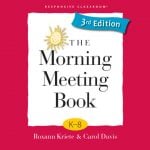by C. Elkins, OK Math and Reading Lady
Part 1 gave a brief summary of setting up your guided reading and literacy stations program. On this post, I will go into more detail on a couple of the points: 1) building a classroom community, and 2) establishing procedures and practicing activities.
When you release your students to work with partners or in small groups, you need assurance they are going to work together harmoniously, at least most of the time anyway! This is critical to the success of your small group instruction, because you don’t want to be interrupted with disputes while you are working together.
So what can you do? Starting from Day 1, you must work on creating a classroom community; one based on mutual respect, collaboration, kindness, a positive atmosphere, and a feeling that each one is a valued member of the class. There are many ways to accomplish this, of course. But I will share my favorites. Before Great Expectations came to SW Oklahoma, I became familiar with an organization called Responsive Classroom (click to link to their website). They are similar to GE, but primarily train teachers in the NE part of the U.S. Like GE, they also focus on a strong link between academic success and social-emotional learning. You can subscribe to their newsletter and order wonderful books via their website. I started with one of their books called “The Morning Meeting Book” (click on title).  It promotes ways to create a classroom community by having a daily “Morning Meeting.” We formed a circle every morning and greeted each other by name in fun ways. Through this circle, we shared successes and concerns for one another, began discussion topics about how we should behave and respect one another, welcomed new students, made group decisions, and set the tone for the day. Every student was acknowledged and felt valued every day. Students don’t want to disappoint a teacher or classmate they respect, and it almost eliminated the need for time consuming behavior charts.
It promotes ways to create a classroom community by having a daily “Morning Meeting.” We formed a circle every morning and greeted each other by name in fun ways. Through this circle, we shared successes and concerns for one another, began discussion topics about how we should behave and respect one another, welcomed new students, made group decisions, and set the tone for the day. Every student was acknowledged and felt valued every day. Students don’t want to disappoint a teacher or classmate they respect, and it almost eliminated the need for time consuming behavior charts.
Through my years of GE training, I added teamwork activities to our classroom routines – especially at the beginning of the year. And then we continued them once a week because caring has to be practiced. We loved “People to People” and “Black Socks” and the “Woo Game.” I am attaching a pdf of 22 Movement, teamwork, energizer activities – I hope you will try some. I feel taking the time to create a caring atmosphere is worth every minute. Then we were able to focus our time on learning.
The second idea for this post is establishing procedures. Of course you learn procedures for daily routines – lining up, when to sharpen pencils, how to head your paper, etc. I knew I needed to start routines early on (how to work independently, or with partners or in small groups), because I needed to be able to meet with students individually for assessment purposes. This assessment information was needed to determine gaps in learning, what strategies were being used (or neglected), and each student’s instructional reading level. . . all this data is needed to help me form my small groups.
Initially, I wanted students to learn how to choose a book, how to read independently and build stamina, how to read with a partner, how to put a book back, how to get an activity out, acceptable places to read and “play”, how to clean up, how to use the computer, what to do when help is needed, how to do the activities (sorting, games, graphic organizers, pocket charts), how to make good choices . . . plus dozens more. A great resource to help explain this in more detail is “The Daily Five” by the 2 sisters (Gail Boushey and Joan Moser). They are also authors of the companion CAFE Book (more about that in a later post). Another is Debbie Diller’s “Literacy Work Stations.” Establishing these procedures is another critical aspect to the success of your guided reading program. (Click on book titles to connect to vendor.)
A rule of thumb is that it may take 5-6 weeks to establish all of the procedures and gather all of the data you need before you start your first day of guided reading groups.
Next week, the series continues. Your comments are welcomed . . . what can you share about your successes with getting started? Do you have a favorite activity or book or routine?